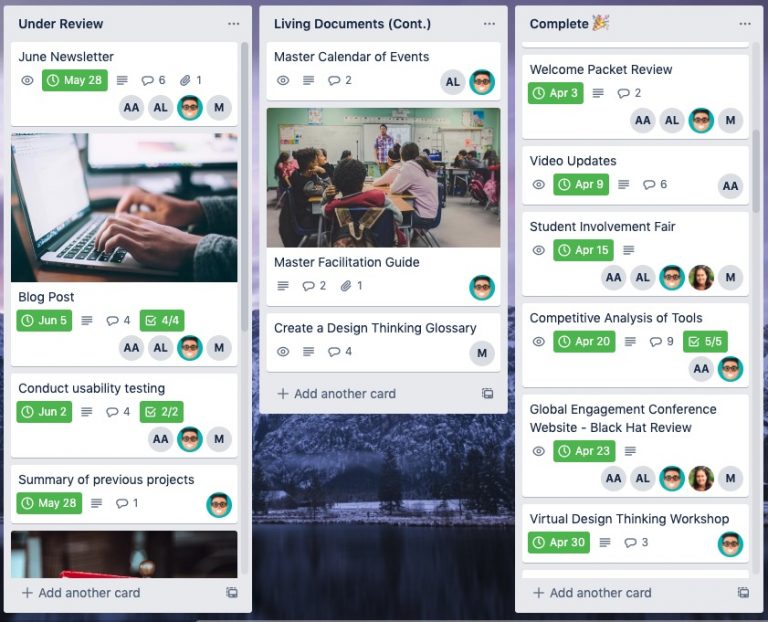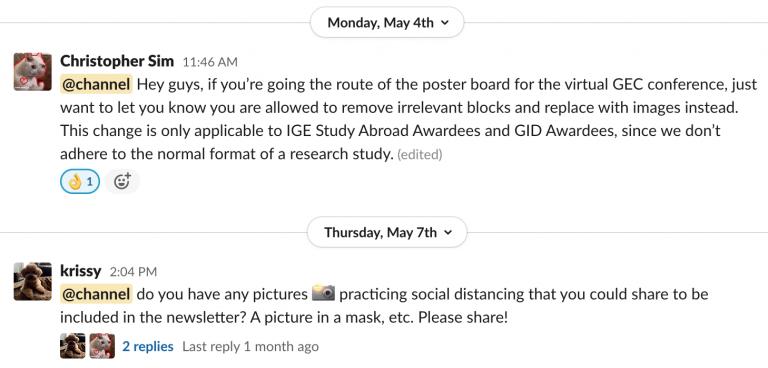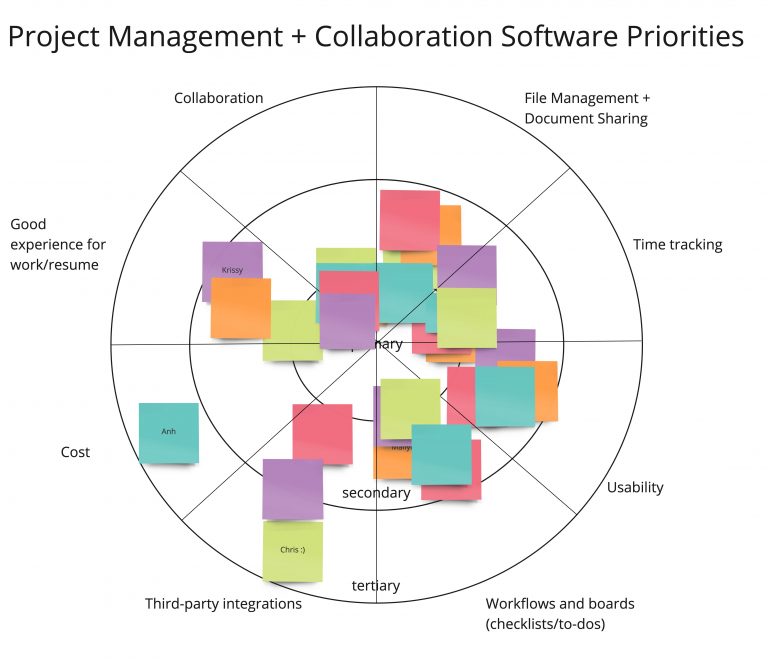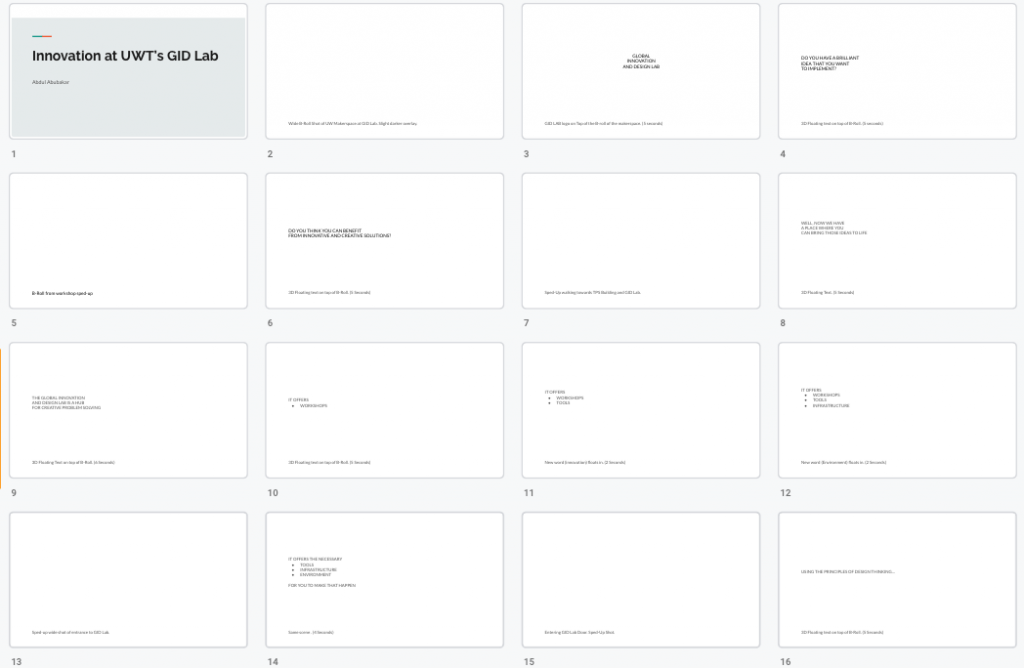Main Content
The Global Innovation and Design (GID) Lab at the University of Washington Tacoma provides human centered design training and resources for campus and community. Using our custom design space and materials for iterative ideation, prototyping, and testing, we work collaboratively with teams across academia and industry to tackle and solve problems.
We undertake projects across all sectors, custom designing workshops around unique needs. For a free consultation and to let us know what you need, please click on the Innovate With Us button below.
The GID Lab spaces (MLG 203, MLG 204, and MLG 211) are open for booking for workshops, with or without our facilitation. Campus requests for use of the Lab must be made through 25Live and the button below. External parties may use only the button below:
Project Gallery

Nov 17, 2024 | Engineering Students Put Empathy Before Design
arrow_drop_down_circle
Engineering Students Put Empathy Before Design
"Who are you designing for and why?" were exciting points of entry for Senior Capstone Project students from the School of Engineering and Technology (SET) at UW Tacoma.
In two high-energy workshops on October 17 and November 7, 2024 in the Global Innovation and Design (GID) Lab, students in Dr. Mark Pagano's class were oriented to human-centered design to center the experience of the user, in their approach to industry projects. Pagano opened the sessions noting that the very building that housed the GID Lab, was produced through the design thinking process.
Lead facilitator for the workshops Dr. Divya McMillin emphasized the importance of “putting people before the problem," urging participants to focus on the real need behind product innovation. She guided the discussion into an "innovation mindset," sparking conversations with students around inventive shortcuts and hacks—like using a potato to unscrew a lightbulb—that simplify daily tasks. Her talk inspired students to think about design as a means to find the next opportunity for positive change.

July 2, 2024 | Tacoma Pierce County Chamber
arrow_drop_down_circle
Tacoma Pierce County Chamber
On July 2 and July 29, Tacoma Pierce County Chamber of Commerce (TPCC) CEO Andrea Reay and members of her leadership team engaged in an exciting design journey with UW Tacoma's Global Innovation and Design (GID) Lab. The purpose was to revitalize team operations within new post-pandemic work-life considerations to better deliver mission and services.
Facilitated by GID Lab's lead facilitator Dr. Divya McMillin and Drew Bamford, CEO of Studio Bamford, the TPCC team drafted its point of entry, "How might we have a shared agreement on the ‘why’ of our work to increase productivity and belonging at TPCC?" Rounds of ideation and prototyping followed the abductive model of reasoning which places value as the first step to problem-solving.
The final convergent prototype of a connected, dynamic, and fluid model of operations centered the internal staff team as problem solvers, with all else feeding and driving that energy, so the Chamber could deliver on its high overarching purpose: to make the South Sound the most equitable, inclusive, and thriving place to do business in Washington State.
Assisting with the workshops were Jessika Gill, GID Lab Design Assistant, and Bronwyn Clarke of Clarke Research LLC and graduate of the Global Honors Program.

May 28 and Aug 12, 2024 | Milgard Women's Initiative
arrow_drop_down_circle
Milgard Women's Initiative
"When women lead..." was the inspiring point of entry for members of the Milgard Women's Initiative (MWI) Advisory Council in their workshops with the Global Innovation and Design Lab on May 28 (virtual) and August 12 (in-person). The purpose was to design a conference that centered the experience of women in the South Sound, particularly those in leadership.
With few spaces for women to come together in leadership, especially those from underrepresented groups, MWI aimed to host an inclusive and celebratory conference, using human-centered design in its planning, promotion, and execution. The August 12 in-person workshop was an inspiring and dynamic three-hour session through the design thinking components of empathy, problem definition, ideation, prototyping, and testing.
The group diverged from one beginning question to 19 design challenges, which converged into 12 challenges and further into one redefined design challenge which questioned whether the conference format was the right one to begin with! From this redefined challenge, MWI members brainstormed 151 ideas to eventually converge on one prototype per main idea. Prototypes reflected the priorities of multigenerational learning and inclusive spaces for networking and converged under a dynamic name for the conference: When Women Lead: Communities Thrive.
The workshops were facilitated by Dr. Divya McMillin and supported by GID Lab Design Assistant Jessika Gill and Amanda Figueroa, Associate Vice Chancellor for Social Mobility.

Feb 22, 2023 UWT Staff Association
arrow_drop_down_circle
February 22-24, 2023 | Framework for Collaboration-UWT Staff Association
A UW Tacoma Employee Association or UWTEA, and a summer retreat for staff and faculty were among the exciting ideas the UW Tacoma Staff Association brought forward in their design sprint to address the challenge:
How might we remove barriers to staff efforts to promote student success?
In addition to the effects of the pandemic, various influences have taken a toll on staff well-being and effectiveness, including uneven communication structures, silos within the organization, and a lack of meaningful staff influence on policy and procedure. The sprint, facilitated by the GID Lab on February 21-22, included empathy interviews with campus stakeholders, affinity mapping, ideation and prototyping. The sprint was preceded by need finding sessions in Fall 2022.
Through high energy and reflective sessions using the principles of design justice, the group created prototypes that they plan to test before rolling out. The project was funded by the Office of the Chancellor.

Shared Futures ANNUAL ideathon
arrow_drop_down_circle
"Tell me about a time.." How to design the best job interview
Shared Futures on February 24, 2023 was a resounding success with students from across majors participating in mock interviews and getting one-on-one feedback from community leaders and professionals. Co-designed by the IIGE's Community Advisory Board and student awardees from its Global Innovation and Design Lab, the two-hour event was packed with interview critique, discussion, questions, and lots of networking. Community members were very enthusiastic about the quality of CVs and cover letters students brought for review, and students walked away with gratitude, with their materials covered with valuable comments and tips. Mock interviews were led by IIGE Board co-Chair Drew Bamford, and the session was moderated by AVC Dr. Divya McMillin. Director of Spaceworks and Metro Parks Board member Michael Liang, and Next Consulting Founder Rachel Askew, served as interviewees. The interviews served as a fun and accessible platform for students to learn best practices and for community members to share expertise and insights, especially in a post pandemic, AI-present world.

Winter 2022 | Building Campus Access
arrow_drop_down_circle
Building Campus Access with Students, Faculty, and Staff
The GID Lab team, including Winter 2022 awardee Aaliya Jones, conducted user research among faculty, students and staff to address the design challenge: "How might we enhance communication between faculty, staff, and students in a way that promotes consistency and trust?". Ideas ranged from hybrid work schedules on faculty and staff office doors to a decision-making flow chart tailored to our campus needs. Next steps include wider user research and prototyping.

Winter 2022 | Collaborative Leadership
arrow_drop_down_circle
Collaborative Leadership through Human-Centered Design
Addressing the questions of “How might we change how we work together?” and “How might we move decision making to its appropriate level?”, the GID Lab team led the Chancellor's executive leadership team through need finding, ideation, and beginning prototyping. Participants created models representing shared culture (a flower) built on values, leadership, community, and mission, and a single vision (a building and a boat) led by leaders with a shared purpose. A second workshop on May 16 will take the group through rapid prototyping of systems and operations that promoted collaborative culture and unified purpose. The project was funded by the Office of the Chancellor.

Summer 2021 | Tacoma Forward: UWT Campaign Leadership Team
arrow_drop_down_circle
Telling the UW Tacoma Story though Human-Centered Design
“How might we create a compelling story to support Milgard Hall and its mission?” and “How might we identify and secure the resources necessary to comprehensively support innovation programming at Milgard Hall?” were the design challenges tackled by the UW Tacoma Campaign Leadership core design team, which included the Chancellor, Campaign co-chairs, and campus community leaders. Dr. Divya McMillin’s TBUS 590 Innovation Through Design Thinking students were trained as facilitators and helped move the core design team through a full design sprint.
A special groundbreaking event, comprehensive and compelling storytelling through various media, and multidisciplinary collaboration with campus and community through events such as Shared Futures were some of the prototypes quickly put into action by the Advancement team and the Institute for Innovation and Global Engagement. Milgard Hall is scheduled to open in January 2023 and we are ready!
The project was funded by the Office of Advancement.

July-August 2021 | Telling the UW Tacoma Story
arrow_drop_down_circle
Telling the UW Tacoma Story Project
Dr. Divya McMillin’s TBUS 590: Innovation Through Design Thinking course, with interim Assistant Director Krissy Kimura and Administrative Specialist Lan Allison assisting, is the second of many collaborations between the Global Innovation and Design Lab and the Milgard School of Business. In March 2021, Dr. McMillin taught a design thinking module for the Essentials of Management Program. During TBUS 590 taught in July-August 2021, 14 MBA students worked through the process of design thinking to problem solve for a real -world client: UW Tacoma’s Campaign Leadership Design Team (CLDT). Together with the CLDT, the students learned about human centered design to break through conventional thinking and ideate inclusive and innovative ways to promote the visibility of Milgard Hall.
In just four fast-paced weeks, students conducted user research, brainstormed and iterated on 22 ideas, refined 14 design challenges, prototyped 20 initial designs, and presented five final prototypes to a panel of industry professionals and UW Tacoma stakeholders. Most exciting is that some of the prototypes are in action: a groundbreaking celebration took place on October 19, and the GID Lab’s artist in residence is already creating a range of meaningful ways to engage the community and tell the story of Innovation at UW Tacoma.

June 2020 | Learning Access Student Project
arrow_drop_down_circle
GID Award Learning Access Project
Written By: Abdul Abubakar, Anh Lam, and Staff
As social distancing becomes increasingly necessary across the United States and around the world due to the COVID-19 pandemic, our traditional ways of working are being disrupted. A recent report from Gartner.comindicates 74% of companies plan to permanently shift to more remote work even after the pandemic. Bearing this in mind, the Global Innovation and Design (GID) Lab focused on shifting its attention towards being successful in a fully remote workplace during Spring 2020.
Early in the quarter, we conducted a competitive analysis of project management, visual collaboration, and communication tools to ensure that we are working efficiently as a team online. This helped us understand what made sense for us to continue using and opened us up to the opportunity of upgrading to other tools. Thanks to these tools, we have been able to make a smooth transition to an asynchronous, but still collaborative work environment. In this blog we will discuss some of the best tools, technologies, and software that we used for virtual collaboration over the past quarter.
Initially, working in a remote environment was challenging, as design thinking is hands on and interactive. Some of the tools had a learning curve that we had to adjust to, but once we started using them it became hard to imagine our work without them. Let’s take a look at the top tools in each category: project management, visual collaboration, and communication.
PROJECT MANAGEMENT: TRELLO
Trello is a project and task management tool that we used to help organize our work. It is a gateway tool to the AGILE/SCRUM workflow as it introduces Kanban boards for its users, which is a great introduction for students with no prior experience. Additionally, it has features like a checklist to outline tasks or agendas, the ability to assign tasks and due dates, and attach documents.
COMMUNICATION: SLACK AND ZOOM
We used Slack for asynchronous communication whenever anyone had a question or wanted feedback on a task. Email can be challenging because an email can be missed or someone might not be copied. Using Slack turns emails into messages and inboxes into channels, which anyone from the team can access – increasing team transparency.
We used Zoom twice a week for video conferencing, which involved participating in interactive design thinking activities, checking-in on current and upcoming tasks, and building team rapport. In addition to the video conferencing feature, Zoom offers a chat box to share links or share non-verbal communication. We often used the screenshare feature to present ideas and give feedback.
VISUAL COLLABORATION: MIRO
Miro is a virtual whiteboard to make it easy to collaborate on distributed teams. This tool let our team participate in interactive design thinking activities like brainstorming ideas, conducting retrospectives, providing feedback, and prioritizing designs. Working in Miro almost felt like working together in-person, as it is so collaborative.



A prioritization activity in Miro to evaluate collaborative tools and software
Conclusion
Here at the GID Lab, we believe that the concept of working from anywhere will be the norm for the future of work. Having the ability to test and adopt new software and tools is important in today’s tech-driven world, especially for new students entering the workforce. As technology advances and brings us closer together (virtually), we hope to continue to take advantage of being location-independent. This will enable us to contribute to the exciting work we are doing, white staying healthy, safe, and productive, all from the comfort of our own homes.

Winter 2020| GID Lab Video Project
arrow_drop_down_circle
Winter 2020 | Process and Purpose-Student Project
Written by: Abdul Abubakar and Staff
Over Winter 2020, I developed a video to bring more awareness to the Global Innovation and Design (GID) Lab. The 60-second long video provides the viewer with a brief introduction to the GID Lab at the University of Washington Tacoma, identifies who the Lab is for (students, faculty, and community members), and why it is an important space on our campus. The video aims to give viewers a better understanding of what they can accomplish with the GID Lab, in a swift, fun, and enticing way.

I started the creative process by making a video production brief that discussed the project background, the motives and intentions behind the video, our target audience (primary, secondary, tertiary), and the tone we wanted to convey (friendly and inviting). I then created a storyboard for the video to outline, organize and visually guide the GID Lab team through the production process. Throughout the creative process of the video, I incorporated elements of design thinking, such as creative ideation, and story-telling, while keeping a human-centered focus.
Here are a few reasons why I chose to make a video and points about how it will enhance exposure for our Lab:
Video helps make a human connection with your viewers. Users have short attention spans, busy schedules, and thousands of other potential distractions. Videos work effectively to grab and keep your user’s attention, while also showing visitors you’re more than another faceless online operation. This pays off in the form of further reach, more credibility, and increased business.
Videos are more memorable than written content. After awhile, our minds ignore words on a subconscious level. While we have a tendency to ignore the written-word, we are more likely to stay engaged in videos. Users remember and respond to videos more often than written content.
I took a detailed and thoughtful approach to this video because I understand how difficult it is to reach an audience with content in today’s impersonal digital world where individuals are craving more connection, personal relationships, and depth. I thought that we could accomplish such user needs with this video because it is one of the best ways to build a connection with our audience and give them a peek into what we are doing at the GID Lab. I hope you enjoy it! Please send me your feedback at globalid@uw.edu.

Summer 2020 | Financial Wellness
arrow_drop_down_circle
Office of Student Transitions & Success and WSECU
The GID Lab Team facilitated two workshops for staff from UW Tacoma Student Transitions and from the Washington State Employees Credit Union (WSECU). Two design challenges, “How might we coordinate efforts to ensure financial wellness is part of the UW Tacoma student experience?” and “How might we create a Financial Wellness Program through the lens of economic justice at UW Tacoma?”, were tackled. The group worked through need finding, ideation and prototyping to build an environment of financial wellness for students. The cohort prototype led to creation of the 2021 Financial Wellness Cohort through the collaborative effort of Sound Outreach, the Office of Financial Aid, and the Office of Student Advocacy and Support.
